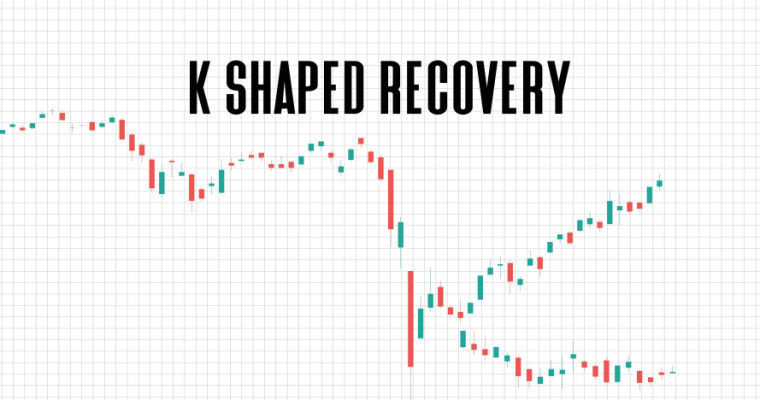What Is Stock Split – Its Example and Why Companies Split Their Stocks

When a company’s stock prices skyrocket and become too high for a significant portion of investors, the company might announce a stock split where a stock is split into two or more stocks to bring the stock price down.
While a stock split is generally followed by more investors buying that company’s stock, it may have deeper connotations that investors must understand. This blog delves into a stock split and explores why you should gather from a company announcing a stock split.
What is Stock Split?
You may have seen corporate announcements in the news about stock split to make the stocks more affordable for investors. A stock split is when a company splits its existing shares into multiple new shares.
Stock splits are purely management choices and are usually performed on a stock trading at a high price per share. The higher the stock price, the more expensive it is for investors in absolute terms to buy even just one share. When a stock split occurs, the number of shares outstanding increases. This means that each shareholder would own a smaller percentage of the company than before the split.
Trivia: The price of one share of MRF shot up even to Rs 1 lakh at one point in its trading history. This is because the company has never performed stock splits to date! Management is happy with the few quality investors they have holding their shares. SBI, on the other hand, has had multiple stock splits over time. Once trading at Rs 2000, the stock was split to bring down per share price to Rs 200 to make it affordable for more investors. Different organizations, different ideologies!
How Does a Stock Split Work?
A stock split is usually carried out in a ratio such as 2-for-1 or 3-for-2, which means that for every share an investor owns, they will receive two or three new shares. The company’s stock price is adjusted accordingly. This increases the number of outstanding shares of the company held by an existing shareholder. However, the most important thing to remember here is that the company’s market capitalization remains the same. Essentially, the price of the company’s shares does not reduce; its value is split into multiple shares per the stock split ratio.
So, how does a stock split work? Let us try and understand it with simple stock split examples.
Let’s say that a company has 100 shares, each valued at Rs. 1,000. If the company were to do a 2-for-1 stock split, that would mean that each shareholder would end up with two shares valued at Rs. 500 each. So, if you had one share of this company valued at Rs. 1,000; after the stock split, you will have two company shares, each with a value of Rs.500.
Also Read: Mutual Funds Vs Stocks: 8 Key Differences Between Stocks Vs Mutual Funds
What is a Forward Stock Split?
Forward stock splits are when a company announces splitting its stock into multiple stocks. In a forward split, an existing shareholder gets more company shares. The stock price is usually cut in half, but the shareholder will end up owning twice as many shares. This can be good or bad, depending on how the stock performs.
For example, let us assume that you have ten shares of a company. Assume that the company announces a 2:1 forward stock split. Thus, you will own 20 shares; but the value of the stocks remains the same.
What are Reverse Stock Splits?
A reverse stock split is when a company’s stock is consolidated into fewer shares. The number of outstanding shares will decrease, but the price per share will increase in proportion to the reverse split ratio. For example, if a company declares a 1-for-2 reverse stock split, then an investor who owns two pre-split shares will own one post-split. The price per share would double since there would be half as many shares outstanding.
Reverse stock splits are sometimes done when a company’s stock price has fallen dramatically and is in danger of being delisted from a stock exchange. By consolidating the shares and increasing the price per share, it becomes easier for investors to trade the stock, and the company can avoid being delisted.
However, reverse stock splits are generally not a good sign for shareholders. They are often done by companies that are struggling financially and may be a sign of desperation. Shareholders should pay close attention to the reasons given by a company for doing a reverse stock split and make sure they are comfortable with the risks before investing.
Benefits of Stock Split for Shareholders
Here are a couple of benefits of stock split:
- Makes shares more accessible: The primary reason why a company chooses to split stocks because if and when a company’s share price rises substantially, it could significantly bring down the investors’ demand. However, by splitting stocks, companies can eventually bring down the price of individual shares without actually changing the value of the shares.
- Increases liquidity: There’s always a rise in liquidity when a company splits stocks or shares. This is because of lower share prices and increased demand. This significantly facilitates buying and selling of shares as well.
What is a stock split ratio?
The stock split ratio is the ratio in which a stock splits. For example, a 1:3 stock split ratio means 1 stock splits into 3 stocks. Similarly, a 3:1 stock split means that after a reverse stock split of 3 stocks, investors will get 1 stock.
Why do Companies Split their Stocks?
Investors often see stock splits as a positive sign because they show that the company’s stock is doing well and trading at a high price. It also makes the stock more accessible to a wider range of investors.
One of the most common reasons companies give a stock split is to attract more investors to invest in their company. This increases the company’s liquidity and makes shares accessible to more people. When the shares of a company are too high, investors are reluctant to invest in the company since their shares seem expensive.
Also Read: Passive Investing: Meaning, Benefits And Strategies To Maximise Returns
What should you Expect when Stocks Split?
As an investor, you should know that a stock split does not affect the underlying value of your investment; it merely changes the number of shares held by the investor. The stock price is also adjusted so that the pre-split value of the stock is maintained.
Final Word
Stock splits might give you the right entry point for investors looking to buy fundamentally strong stocks that were priced at a high price. While stock splits are generally seen as a good thing by investors and analysts alike, it is essential to keep in mind that stock splits are not always a bullish sign. In some cases, companies may split their stock to increase liquidity or signal to the market that they are unhappy with the current stock price.
You should not expect much to change in the short term after a stock split. In the long-term, however, stock splits can be just one of many indicators that a company is doing well and is worth investing in.
FAQs
Ans. A stock split helps bring down the price of an expensive share. This increases the number of investors interested in buying the share, who were previously reluctant to do so due to its prices.
Ans. A stock split makes the stock attractive to more investors, which can increase the company’s liquidity. However, a stock split impacts the company’s market capitalization.
Ans. A stock split will only impact the number of shares you hold. It will not impact the value of those shares since it remains the same.
Ans. A stock split can be considered good news for investors who want to invest in fundamentally strong stocks that may be valued at higher prices.
Before you go…
- Looking for instant ? personal loans 24*7 anywhere, anytime? Install the Navi app now!
- Or, maybe you’re looking to buy that house you’ve been eyeing ? and
you need a loan of up to Rs.10 crore. Install the Navi app now and get instant in-principle approval right away! Interest rates starting at 6.95% p.a. - How about an affordable health insurance policy ?⚕️ starting at a monthly premium of just Rs. 241? Install the Navi app now and get your policy in under 2 minutes.
- Instead, want to put your savings into action and kick-start your investment journey ? But don’t have time to do research. Invest now with Navi Nifty 50 Index Fund, sit back, and earn from the top 50 companies.
Disclaimer: This article has been prepared on the basis of internal data, publicly available information and other sources believed to be reliable. The information contained in this article is for general purposes only and not a complete disclosure of every material fact. It should not be construed as investment advice to any party. The article does not warrant the completeness or accuracy of the information, and disclaims all liabilities, losses and damages arising out of the use of this information. Readers shall be fully liable/responsible for any decision taken on the basis of this article.

Customer’s Feedback
No comments found.Illiquid Stocks Guide: Definition, Examples, and its Working
Illiquid stocks are part of a long-term investment strategy that is appropriate for investors who a... Read More »What is Shooting Star Candlestick Pattern in Trading?
The shooting star candlestick pattern is considered to be a bearish reversal candlestick ... Read More »What is VWAP Indicator and How to Use it for Trading
The VWAP indicator shows the volume-weighted average market price of a particular stock. You can us... Read More »What is Price Action Trading: Its Strategy, Stop Loss and Profit Targets
Price action trading is a methodology in which the trader solely relies on analysing a security’s... Read More »What is Buy the Dip Strategy in Trading – Working and Example
‘Buy the dip’ is one of the most common phrases in the stock market. It is sort of a go-t... Read More »What is the Black Scholes Model – Formula, Calculation and Assumptions
Among the important concepts in modern financial theory, the Black Scholes model, developed in 1973... Read More »What is Iron Condor and What are its Strategies?
Iron Condor is an options trading strategy that involves four options with the same expiration date... Read More »What is Harmonic Pattern and How Does it Help in Trading?
Harmonic patterns are one of the most efficient and effective trading patterns. Although they are m... Read More »What is a Contract Note and Why is it Important?
Contract note is a legal document containing the details of every stockbroker's trade on a stock ex... Read More »What is K-shaped Recovery: Indication, Example and
Economies go through multiple phases in business cycles. One such phase is a recession which is mar... Read More »Guide to Book Building – Its Types, Benefits and Process
Initial public offerings (IPOs) are priced as specified by their underwriters. The process by which... Read More »Support and Resistance in Trading: Working, Strategies, Uses and Example
Support and resistance are two of the most significant and practical concepts in technical analysis... Read More »Top 10 Chit Fund Schemes in India in 2023
Chit funds are one of the most popular return-generating saving schemes in India. It is a financial... Read More »10 Best Gold ETFs in India to Invest in April 2023
Gold ETFs or Gold Exchange Traded Funds are passively managed funds that track the price of physica... Read More »10 Best Demat Accounts in India for Beginners in 2023
Creation of Demat accounts revolutionised the way trades were conducted at the stock exchanges. It... Read More »20 Best Index Funds to Invest in India in April 2023
What is an Index Fund? An index fund is a type of mutual fund or exchange-traded fund (ETF) that... Read More »Best Arbitrage Mutual Funds to Invest in India in April 2023
Arbitrage funds are hybrid mutual fund schemes that aim to make low-risk profits by buying and sell... Read More »10 Best SIP Plans in India to Invest in April 2023
What is SIP? SIP or Systematic Investment Plan is a method of investing a fixed amount in ... Read More »10 Best Corporate Bond Funds in India to Invest in April 2023
Corporate bond funds are debt funds that invest at least 80% of the investment corpus in companies ... Read More »10 Best Bank for Savings Account in India [Highest Interest Rate 2023]
Savings account is a type of financial instrument offered by several banks. It lets you safely depo... Read More »




















